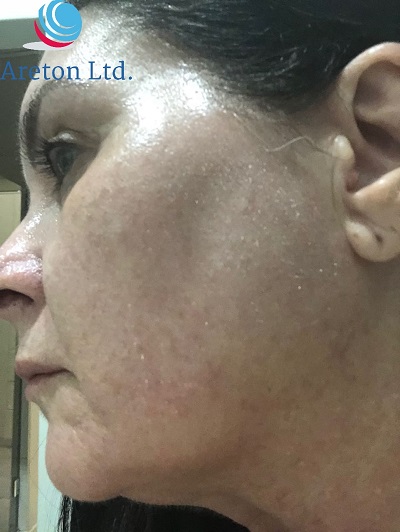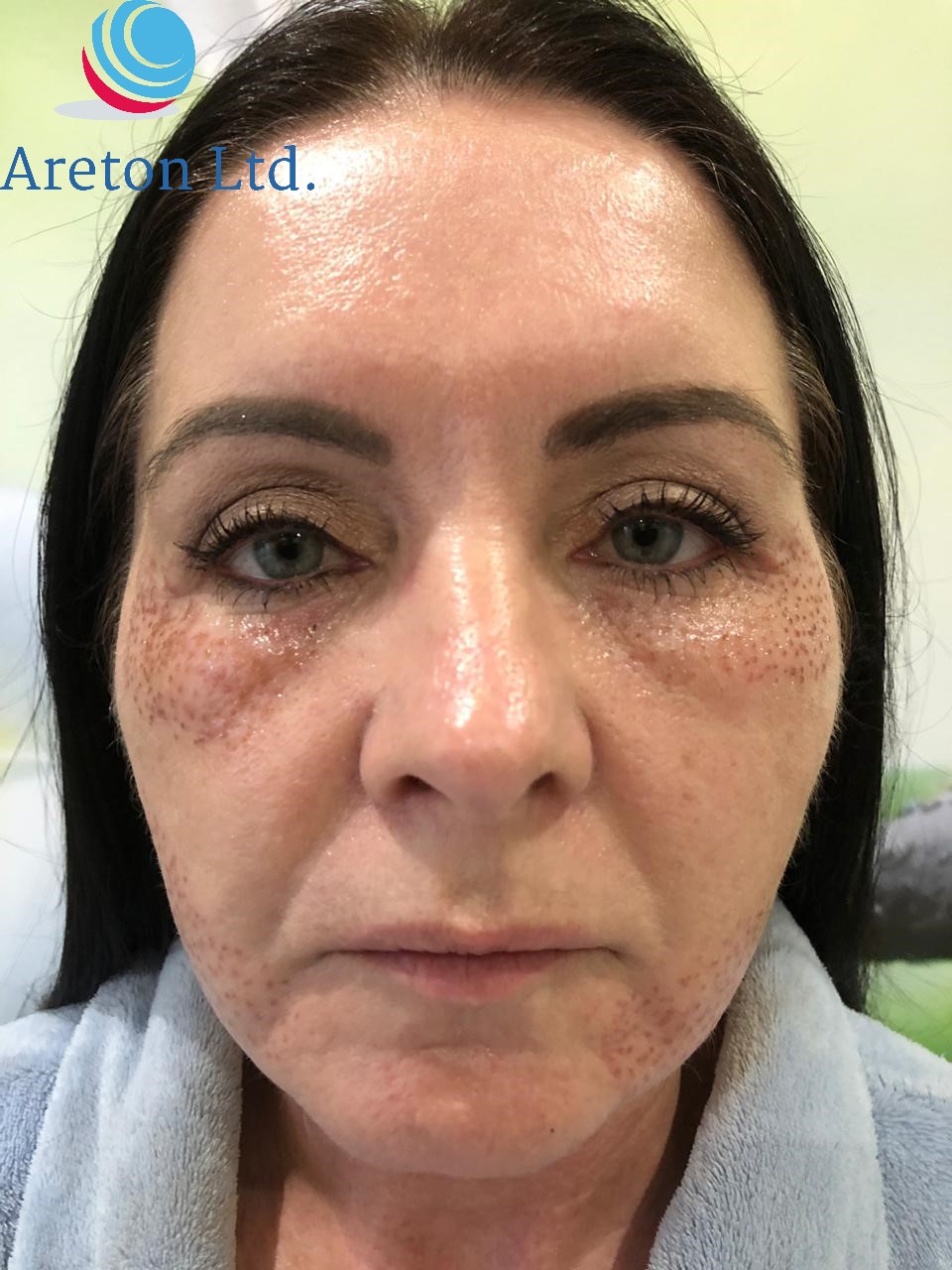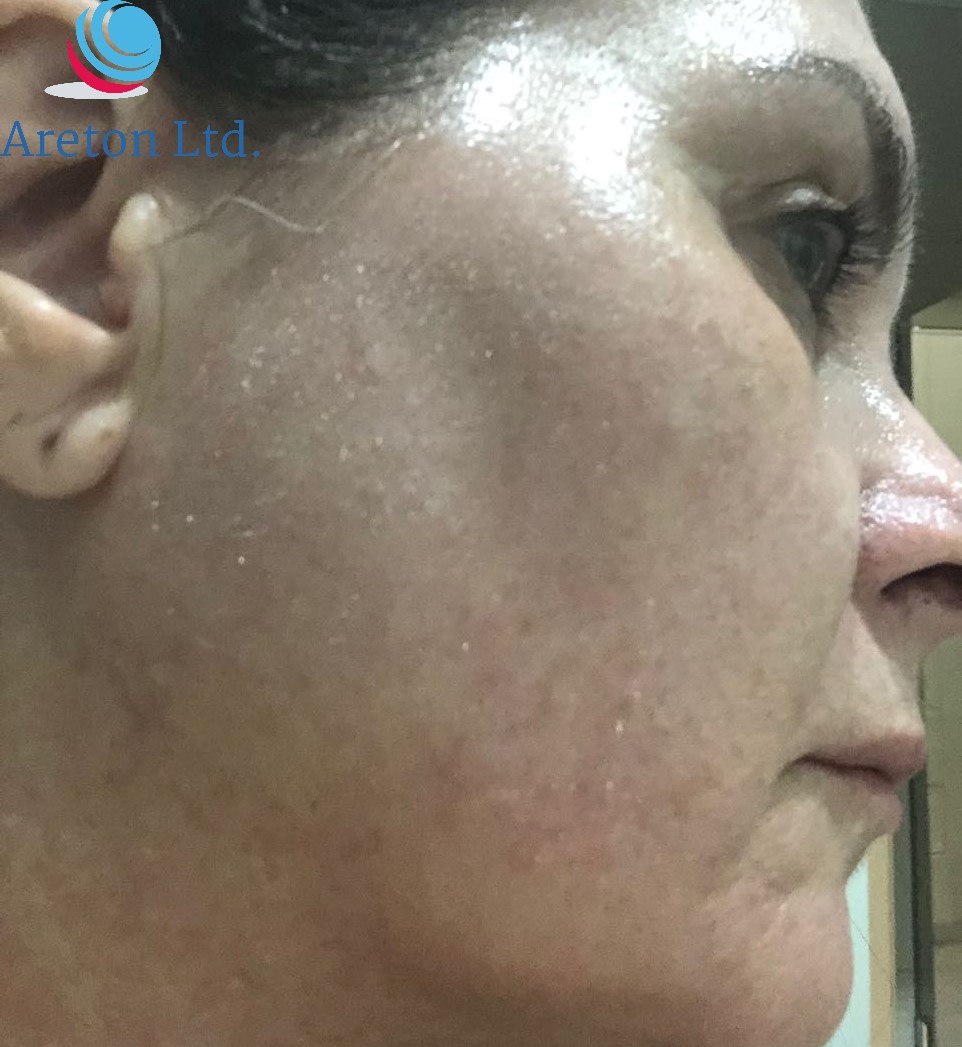[:en]
This particular treatment was carried out in July 2018. There was no results for this particular treatment, instead the subject had hyper-pigmentation. In this case we would be discussing the reasons why this happened and how to prevent it.

In this video will, you will see the entire treatment, a short summary of the healing progression and the results. You can limit yourself to watching the video, however, if you want to learn more about the healing progression and results, all the information is presented later in this case study.
In particular, the video shows you: The Before and After Pictures Comparison, The Before Pictures taken just before the treatment, Pictures taken during the Treatment, Pictures Taken Immediately After the Treatment, The healing progression summary and The entire procedure.
Hyperpigmentation is a condition that causes the skin to darken. It can occur in small patches, cover large areas, or affect the entire body. This condition usually isn’t harmful, but it can be a symptom of another medical condition.
There are several types of hyperpigmentation:
Melasma is believed to be caused by hormonal changes and develops during pregnancy. Areas of hyperpigmentation can appear on any area of the body. They appear most commonly on the abdomen and face.
Sunspots, also called liver spots or solar lentigines, are common. They’re related to excess sun exposure over time. Generally, they appear as spots of hyperpigmentation on areas exposed to the sun, like the hands and face.
Post-inflammatory hyperpigmentation is a result of an injury to the skin.
Darkened areas of the skin are the only symptoms of hyperpigmentation. Patches can vary in size and can develop anywhere on the body.
Sun exposure can increase melanin production. Greater exposure to the sun increases the risk of developing hyperpigmentation.
A common cause of hyperpigmentation is an excess production of melanin. Melanin is a pigment that gives skin its color. And it’s produced by skin cells called melanocytes. Several different conditions or factors can alter the production of melanin in the body. Certain medications can cause hyperpigmentation. Also, some chemotherapy drugs can cause hyperpigmentation as a side effect, according to the University of New Mexico Comprehensive Cancer Center. Pregnancy changes hormone levels and can affect melanin production in some women. Endocrine diseases, like Addison’s disease, disrupt hormone levels and can increase melanin production. Excessive sun exposure can also cause an increase in melanin.
A dermatologist can diagnose hyperpigmentation. They will take your medical history and give you a physical exam to determine the cause. In some cases, a skin biopsy can rule out skin cancer.
Topical prescription medication can treat some cases of hyperpigmentation. This medication usually contains hydroquinone, which bleaches skin. Utilizing retinoic acid also assists with lightening dark spots of the skin. Both of these medications can take a few months to lighten darkened areas. Home care sometimes includes over-the-counter medications that may lighten dark spots. These medications don’t contain as much hydroquinone as prescription medications. Home care also includes using sunscreen. Your doctor may also suggest laser treatment to reduce hyperpigmentation.
Hyperpigmentation is not harmful and usually isn’t a sign of a serious medical condition. In some cases, darkened areas of the skin fade on their own. In others, the dark spots fade with treatment. Even if treatment can’t completely reverse hyperpigmentation, it may improve the condition.
It’s not always possible to prevent hyperpigmentation. However, using sunscreen with an SPF of at least 30 can help, as can wearing hats or clothing that block sunlight and avoiding the sun during the hottest times of the day. Avoiding certain medications may also prevent hyperpigmentation.

More PIctures
[foogallery id="8922"]
More Pictures
[foogallery id="8903"]
More Pictures
[foogallery id="8915"]Este tratamiento en particular se llevó a cabo en julio de 2018. No hubo resultados para este tratamiento en particular, en cambio, el sujeto tenía hiperpigmentación. En este caso, estaríamos discutiendo las razones por las que sucedió esto y cómo prevenirlo.

En este video, verá el tratamiento completo, un breve resumen de la progresión de la curación y los resultados. Sin embargo, puede limitarse a ver el video. Si desea obtener más información sobre la progresión de la curación y los resultados, toda la información se presenta más adelante en este estudio de caso.
En particular, el video muestra: Comparación de imágenes antes y después, Imágenes tomadas antes del tratamiento, Imágenes tomadas durante el tratamiento, Imágenes tomadas inmediatamente después del tratamiento, Resumen de la progresión de la curación y todo el procedimiento.
La hiperpigmentación es una condición que hace que la piel se oscurezca. Puede ocurrir en parches pequeños, cubrir áreas grandes o afectar todo el cuerpo. Esta condición generalmente no es dañina, pero puede ser un síntoma de otra condición médica.
Hay varios tipos de hiperpigmentación:
Se cree que el melasma es causado por cambios hormonales y se desarrolla durante el embarazo. Las áreas de hiperpigmentación pueden aparecer en cualquier área del cuerpo. Aparecen más comúnmente en el abdomen y la cara.
Los lentigos solares, también llamadas color de hígado o lentigos seniles, son comunes. Están relacionados con el exceso de exposición al sol a lo largo del tiempo. Generalmente, aparecen como manchas de hiperpigmentación en áreas expuestas al sol, como las manos y la cara.
La hiperpigmentación postinflamatoria es el resultado de una lesión en la piel.
Las áreas oscurecidas de la piel son los únicos síntomas de hiperpigmentación. Los parches pueden variar en tamaño y pueden desarrollarse en cualquier parte del cuerpo.
La exposición al sol puede aumentar la producción de melanina. Una mayor exposición al sol aumenta el riesgo de desarrollar hiperpigmentación.
Una causa común de hiperpigmentación es un exceso de producción de melanina. La melanina es un pigmento que da color a la piel. Y es producido por células de la piel llamadas melanocitos. Varias condiciones o factores diferentes pueden alterar la producción de melanina en el cuerpo. Ciertos medicamentos pueden causar hiperpigmentación. Además, algunos medicamentos de quimioterapia pueden causar hiperpigmentación como efecto secundario, según el Centro Integral del Cáncer de la Universidad de Nuevo México. El embarazo cambia los niveles hormonales y puede afectar la producción de melanina en algunas mujeres. Las enfermedades endocrinas, como la enfermedad de Addison, alteran los niveles hormonales y pueden aumentar la producción de melanina. La exposición excesiva al sol también puede causar un aumento de la melanina.
Un dermatólogo puede diagnosticar la hiperpigmentación. Tomarán su historial médico y le harán un examen físico para determinar la causa. En algunos casos, una biopsia de piel puede descartar cáncer de piel.
La medicación tópica de prescripción puede tratar algunos casos de hiperpigmentación. Este medicamento generalmente contiene hidroquinona, que blanquea la piel. El uso de ácido retinoico también ayuda a aclarar las manchas oscuras de la piel. Ambos medicamentos pueden tomar algunos meses para aclarar las áreas oscuras. La atención domiciliaria a veces incluye medicamentos de venta libre que pueden aclarar las manchas oscuras. Estos medicamentos no contienen tanta hidroquinona como los medicamentos recetados. Cuidados en el hogar también incluye el uso de protector solar. Su médico también puede sugerir un tratamiento con láser para reducir la hiperpigmentación.
La hiperpigmentación no es dañina y, por lo general, no es un signo de una afección médica grave. En algunos casos, las áreas oscuras de la piel se desvanecen por sí solas. En otros, las manchas oscuras se desvanecen con el tratamiento. Incluso si el tratamiento no puede revertir completamente la hiperpigmentación, puede mejorar la condición.
No siempre es posible prevenir la hiperpigmentación. Sin embargo, usar protector solar con un SPF de al menos 30 puede ayudar, al igual que usar sombreros o ropas que bloquean la luz solar y evitar el sol durante las horas más calurosas del día. Evitar ciertos medicamentos también puede prevenir la hiperpigmentación.

More PIctures
[foogallery id="8922"]
More Pictures
[foogallery id="8903"]
